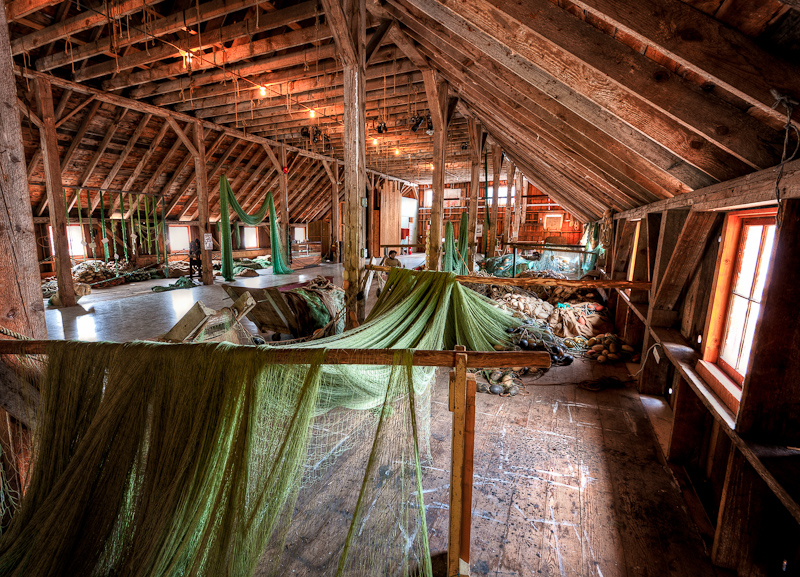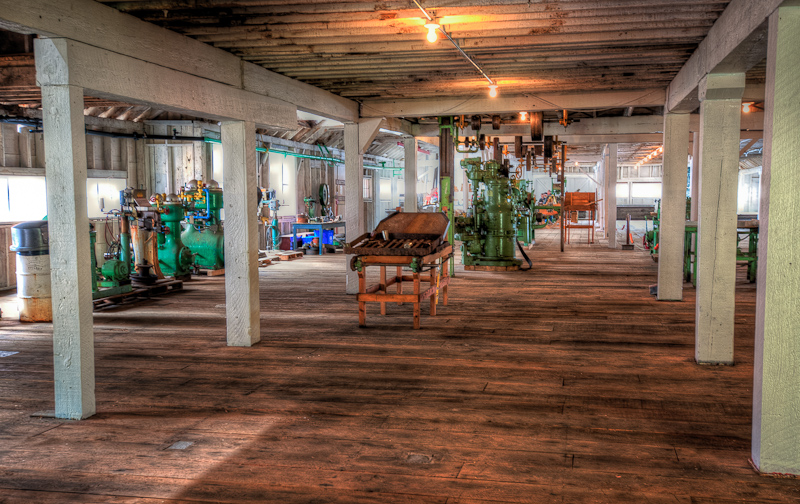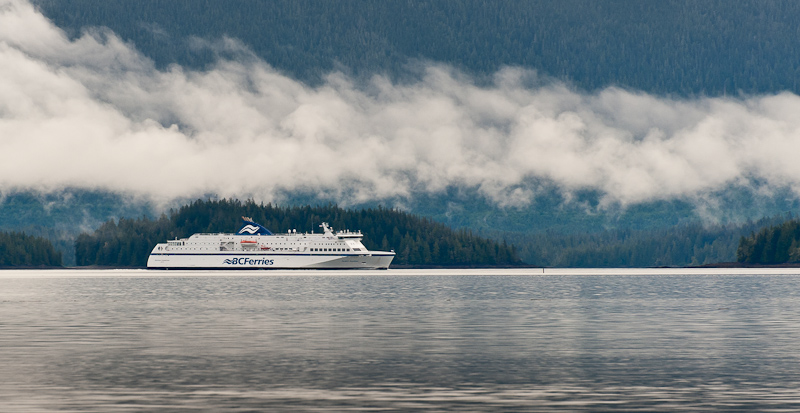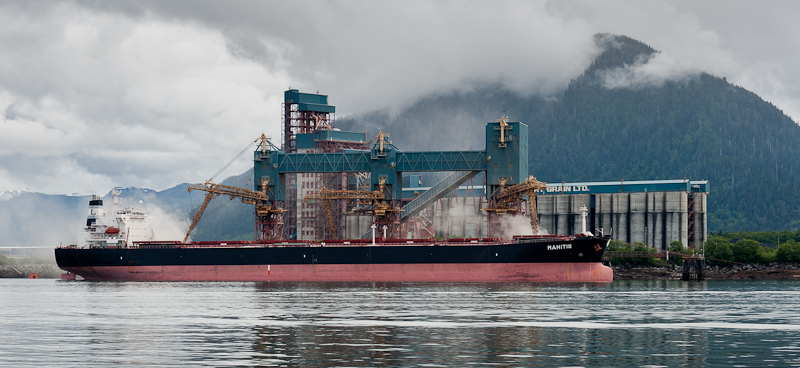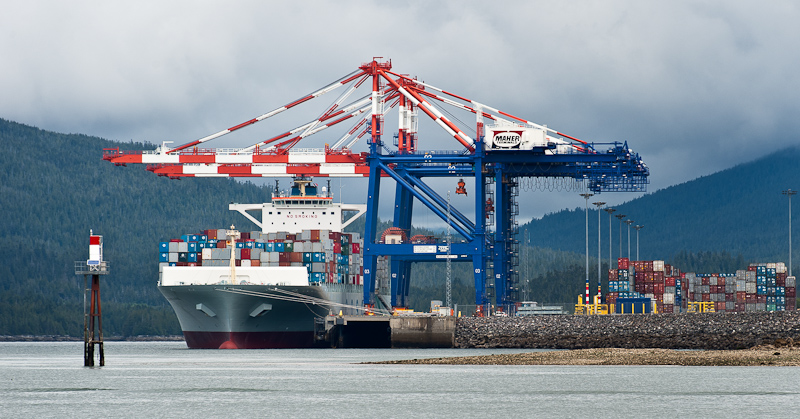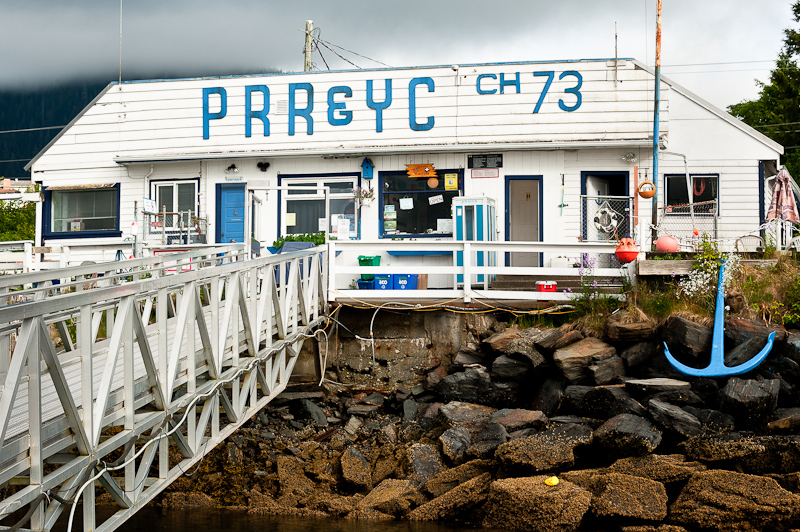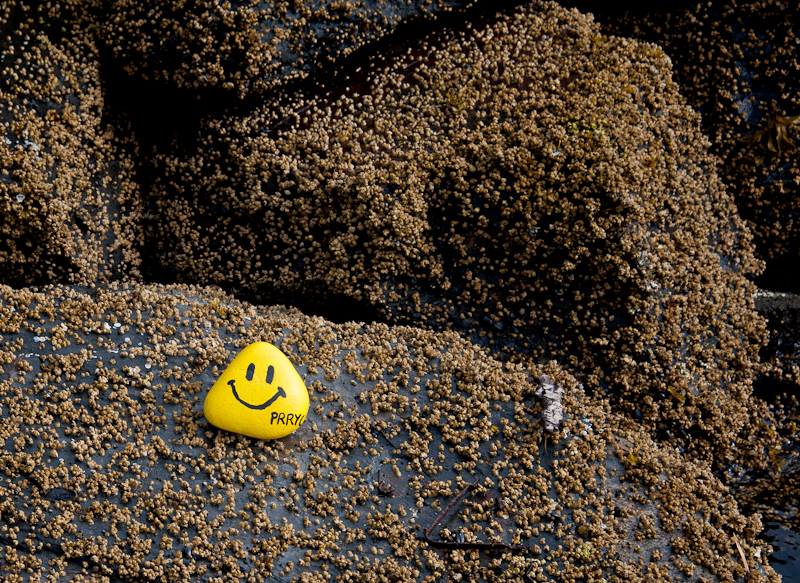We were up at a reasonably early hour to head through Venn Passage and the Duncan Bay “shortcut”, knowing this route would shorten our trip to Dundas Island considerably. We had not heard much about Venn Passage, and the Douglass book certainly made it sound quite doable – but a couple we had spoken with at Ocean Falls was extremely negative on the pass and said that they had many friends who had tried to take the shortcut and had ended up grounded.
Hmm…a quick call to Brian Pemberton at NWExplorations, our charter company, and we were back on track, heading through Venn Passage, prepared to keep extra sharp situational awareness with the range and various channel markers.
So…we wake up to hit a nice high tide in Venn…and find fog. Not totally obscured, as we pilots would say, but enough to get your attention. The wind was calm, though, and we got off the dock easily, slipping away with ease. Given all the wood and kelp in the water between the boat and the dock, I had worried that we might have more difficulty than we did. We liked Prince Rupert and look forward to coming back.

The fog settles in Prince Rupert harbour.

Prince Rupert peeks out from under the fog.
Good thing Bob is an IFR pilot, we had to keep a very close eye on the radar. The navigation over toward the start of Venn Passage was uneventful, except for all the fast moving fishing boats that would appear, ghostly and silent.
We had enough visibility to identify the airport dock and to validate that the Nobeltec marker placement was spot on. However, when we had to turn onto the range markers, they were totally obscured. Luckily, about halfway through, the fog started to lift and we could see Metlakatla in the distance. About this time, water taxis and fishing boats started to zip by. Glad we could see better!
We followed the buoys through a very circuitous route and kept an eye on all the fishing boats coming in through Duncan Bay from the north. We felt this passage was not a big deal and would do it again in a heartbeat.
The weather was calm, and we set course for Dundas Island. I had always wanted to go there. Why? I’m not sure…it’s the northernmost part of Canada that was on our course, and it would make for an easy day the next day to Foggy Bay, AK. I had heard that the horseflies were bad in Brundige, but we hadn’t had any problems so far and how bad could it be, right?
So off we went, sunshine abounding. We were being quasi-paralleled and overtaken by a tug (Ocean Navigator) with tow. The AIS kept forecasting that we would pass quite close, and I wanted to fall off and let the tug take the lead, but Bob insisted we hold our course. About the time we got to the lovely Green Island Lighthouse and dodged a few small fishing boats, we had to give way so that the tug could pass and we could cut west.
As we rounded the top of Dundas, we saw a fancy floating fishing resort and some of their boats tooling around. Headed into Brundige, we saw one lonely sailboat headed out to cross Dixon Entrance back into the US. That would be us tomorrow.
We arrived about noon. Brundige Inlet was very long and not that visually exciting, but as we dropped anchor at the head, I was excited about doing some kayak exploring. However, as I was outside doing the anchor dance, I was enveloped in a sea of flying insects that were totally annoying. I was too busy to see exactly what they were, and I was totally covered except for my head. The anchor did not bite the first time, so we had to reset, extending my exposure to the flying (but apparently not biting) creatures. I even pulled my hood up to keep the darned things out of my face. Bob told me later my jacket was bug-covered when I was dropping the anchor.
As soon as I came inside, though – a different story. I had bites the size of goose eggs on my forehead, neck and hairline. They HURT! And they were a real pain for at least 3 days. This immediately dissuaded me from any attempt at outside exploration. YUCK! We were extra appreciative of the custom door screens on Alaskan Dream that allowed us ventilation without having our blood sucked dry.
We watched a movie, and later in the afternoon we saw two large sandhill cranes on one of the beaches. I was bummed we couldn’t go out and get closer to these magnificent creatures, but there was no way I was getting more bites.
Dinner was grilled pork and mashed sweet potatoes. I admit I thought Bob would get eaten alive while grilling the pork outside, but though he saw lots of flies and bugs, nothing bit him. Guess he’s not as sweet.
We watched the movie Wimbledon and were joined by the boat Whiskey Way out of Price Rupert about 9pm. Like many, he came into the anchorage at full speed and waked us for no apparent reason other than that he could. Grrrr.
We had a good night’s sleep, as it was quiet once his wake settled down and all was well.






